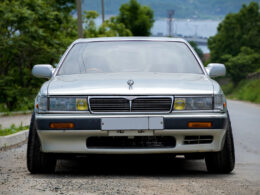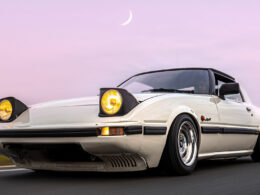Without a doubt, staggered wheels look sick, but looks aren’t everything — unless you’re all about that stance life.
If you prioritize drivability over aesthetics, then going staggered isn’t the best idea. However, unfussy staggered setups aren’t unheard of. As long as you don’t stray too far from the OE rolling radii, there won’t be any glaring issues.
This type of fitment is standard on many production sports cars. It’s only when you install staggered wheels on cars originally designed with a square setup that things can go wrong.
Nissan Z cars, for instance, are staggered from the factory, allowing some leeway for experimentation with wheel sizes. But if you do this on, say, a Subaru WRX with its symmetrical AWD system, all hell will break loose.
In this article, we explore how staggered wheels affect handling, compare them with square setups, and discuss the pitfalls of this modification on AWD cars.
What Is a Staggered Setup?

Over the years, we’ve seen many sports cars with staggered setups. If you own one, you’re likely familiar—or quickly learned—what a staggered fitment entails the first time you had to replace its tires.
For those not in the know, a staggered setup is when your wheels on one axle are larger than those on the opposing axle. Typically, the driven wheels are larger than the non-drive wheels. Some people do it the other way round, but that’s purely for aesthetics.
Now, “larger” may refer to wheel diameter, tire width, wheel offset, or a combination of these. The most common setup is wider rear wheels with narrower fronts, typically seen on RWD cars. Wider fronts on FWD cars are also a thing.
No matter the orientation, staggered setups are characterized by the difference in the rolling diameter or width of your front and rear wheels.
Why Go Staggered?
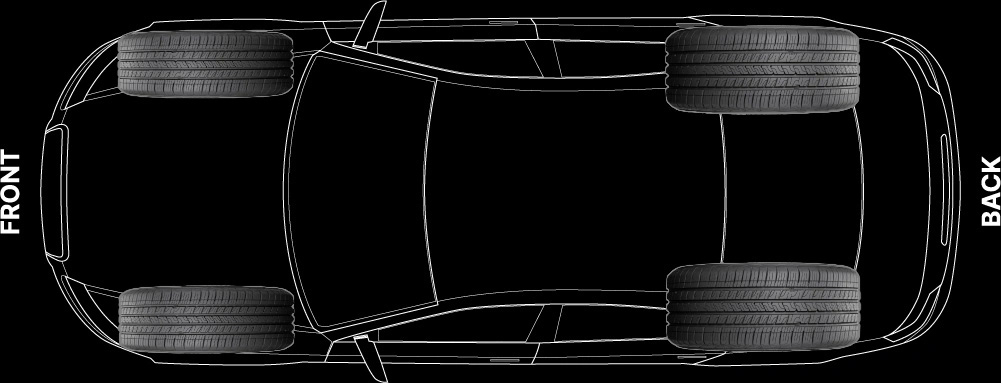
There are many reasons enthusiasts run staggered wheels and tires. Primarily, they do this so that the driven wheels have the most amount of grip.
This idea is fueled by the notion that a larger contact patch—also called the tire’s footprint—at the driven wheels will equal more grip. While this is true in theory, it’s not so cut and dry in reality. Many other factors affect this; wider doesn’t always translate to better performance.
Another reason why staggered wheels are popular is for aesthetics. Like we mentioned before, this setup on a tastefully done widebody car will definitely turn heads, whether it makes sense from an engineering point of view or not.
Arguably, the most productive application of staggered wheels is being able to dial-in the perfect understeer bias for your needs. More on this later.
How Staggered Setups Affect Handling

With the basics out of the way, let’s explore how staggered setups affect handling on cars with different drivetrain layouts.
It’s worth noting that we’re not claiming the handling characteristics of this fitment to either be good or bad, considering how subjective and application-dependant the outcomes can be.
More Grip at the Driven Wheels?
The consensus about staggered fitment is that it allows you to fit wider tires at the driven wheels, effectively increasing traction where it matters. Traction limited cars have a clear advantage here.
In other words, if your car makes too much power and has a hard time actually putting it to the ground, then installing wider tires where you have power will help.

Most of us instinctively believe that wider tires equal more grip, and more-grip equals better handling. While this is true in theory, the nuanced effects of wider tires in staggered setups are worth considering.
For instance, a larger contact patch will objectively increase grip since it reduces load per unit area, but engineers usually hit a ceiling, beyond which there are diminishing returns, such as excessive weight, rolling resistance, and aerodynamic drag.
Let’s take a closer look at some of these constraints:
- Aerodynamic drag: Wider tires can increase aerodynamic drag, potentially reducing overall speed and fuel efficiency. This added drag can counteract some performance benefits.
- Rolling resistance: Wider tires have higher rolling resistance, which can impact fuel economy and increase tire wear. This means the engine needs to work harder to keep the car moving.
- Torque availability: The factors above get even worse if your car doesn’t generate enough torque to begin with.
- Center of mass: Engine placement and center of mass affect the desired front-rear lateral force bias. The idea is to avoid working the tires disproportionately to prevent unwanted changes in steering balance.
- Slip angle: Wider tires have a smaller slip angle at high lateral Gs, which helps to generate more grip. This refers to the angle between the direction a tire is pointed and the actual direction it’s moving.
- Tire load sensitivity: At higher loads, your tire’s coefficient of friction decreases. Wider tires are less sensitive to load changes, providing more grip under heavy loads. However, they can also make the car more susceptible to changes in road surface and tire pressure variations.

- Tread pattern: The design of the tread pattern is crucial for performance. Wider tires with improper tread patterns can lead to poor water evacuation and reduced grip in wet conditions.
- Road conditions: The benefits of wider tires are more noticeable on dry, smooth surfaces. On rough or uneven roads, they can lead to a harsher ride and may not provide the expected handling improvements.
- Possibility of hydroplaning: Wider tires have a larger surface area that can lead to increased hydroplaning risk in wet conditions. Proper tread design is essential to mitigate this risk.
What all this means is that simply installing a wider set of rear tires isn’t going to cut it. There needs to be a balance in aspects of your car’s suspension geometry, weight distribution, and handling dynamics.
“Dynamics” being the operative word, because in real world driving applications, things are never static. Wheel articulation, load transfer, and suspension angles change constantly when your car is in motion.
Almost nothing is constant, which goes to show that there’s no such thing as a perfectly balanced car. Every corner is different, every moment in racing demands something different.
This is true for every single modification out there, so you have to figure out what works for you.
Adjusting Steering Balance
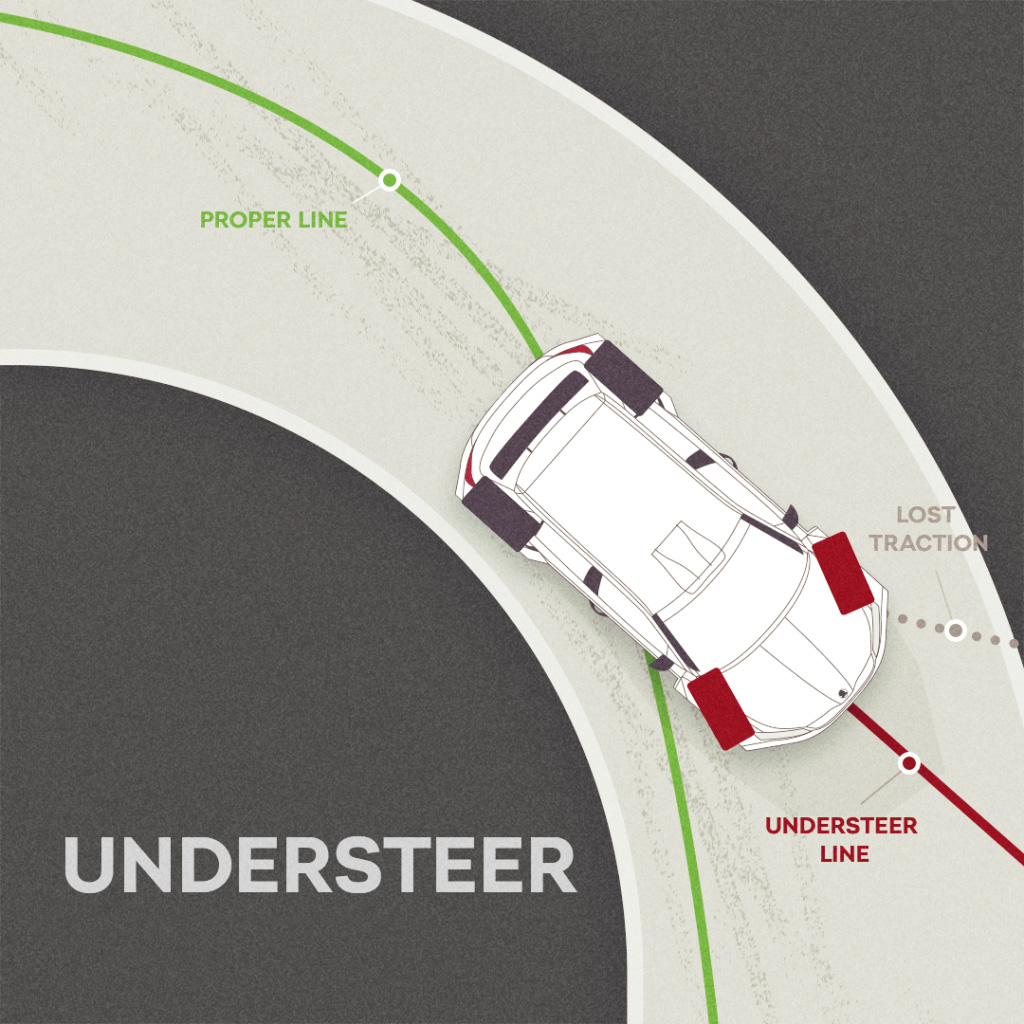
One of the most significant effects of staggered setups on RWD cars is the altered grip distribution between the front and rear tires, which ultimately influences the car’s response to steering inputs.
As mentioned in the list above, the center of mass and weight distribution also play a role here; it affects the roll centre, requiring either the front or the rear tires to generate more lateral force than the other pair.
When you install wider rear tires on RWD cars, it induces understeer, which can be beneficial on cars that have a tendency to oversteer. This is entirely a personal preference though—some people actually enjoy the oversteer-bias.
With FWD cars, most drivers will agree that installing wider rear tires is a bad idea. These cars inherently have a tendency to understeer as they are. Wider rear tires just adds fuel to the fire. This is when reverse staggered setups help, that is, wider front and narrow rear.
Audi demonstrated the use of wider front tires as a remedy for its relentless understeering issue on the production model RS3. Nissan followed in their footsteps in their front-engine Nissan GT-R LM Nismo LMP1 car.
Cons of Going Staggered
Subjectivity aside, let’s look at some pitfalls of going staggered, regardless of your drivetrain layout, weight distribution, and engine placement.
We’ll begin with the most obvious, easy-to-live-with problems, and then move on to the more serious stuff that might deter you from even trying this upgrade.
Tire Rotation Problems

Possibly the most annoying problem associated with staggered wheels is that they limit tire rotation options. This means you cannot cross-rotate your tires, which might wear them out unevenly.
This also means that you need to monitor the wear patterns like a hawk and ideally marry the tires, that is, replace them all at the same time.
However, you can rotate your staggered tires side to side as long as they aren’t directional. If they are directional, then you’ll have to dismount them and reinstall them with the tread facing the opposite direction.
With square setups, you can rotate tires front to back since they’re the same size, which means they will last longer and cost less money as opposed to staggered setups.
ABS and Traction Control Problems

A frequently reported problem from people who switch to staggered wheel setups on cars initially designed with square wheel configurations is that their ABS and TCS systems begin to malfunction following the upgrade.
This issue has to do with discrepancies in the rolling radii of your front and rear wheels. Whether it’s caused because of mismatched tire sidewall profiles or rim diameters, the result is the same.
When this happens, the computer has no idea you’re running custom wheel sizes and so it operates under the assumption that it’s all OEM.

Consequently, the data from your wheel speed and yaw rate sensors doesn’t match what the ECU is programmed to work with, causing it to interpret the varying wheel speeds and grip levels as slippage or loss of traction.
It then takes “corrective” measures, as if it were trying to answer questions it doesn’t understand. This causes all sorts of issues depending on your specific condition and drivetrain configuration.
As long as you size your staggered tires to keep your front and rear rolling diameters the same or almost similar, there won’t be a problem. For instance:
- 275/35/19 and 285/35/20: 0.58% difference
- 275/40/17 and 275/40/18: 3.9% difference
Stay under 3% and you’re good. If you’re still having issues, they can be attributed to other factors like difference in tire compounds, road surface, and steering bias. This also applies to problems with differential units on AWD cars.
Differential Issues on AWD Cars

AWD cars, in particular, are extremely sensitive to any discrepancies in tire tread patterns, width, and rolling diameters. Any of these can and will have adverse effects on AWD cars. That’s why you see fewer AWD cars running staggered wheels.
These cars are typically equipped with viscous couplings that are designed to allow temporary differences in wheel speeds (slippage) when you’re turning, or if you have varying traction levels on different tires.
When you have mismatched tires or tires with different diameters at different ends of your AWD car, you’re essentially forcing your differentials to work 100% of the time.
In this scenario, the viscous couplings will constantly try to equalize wheel speeds and will eventually overheat and end up damaged.

If you drive an AWD car and are curious to know about recommended tire sizes and the manufacturer recommended protocol, consider taking a gander at the old manual.
If you wish to go staggered on AWD regardless, consider the 3% rule mentioned above. Alternatively, you can investigate whether a factory performance package was available for your car, and find out the tire and wheel sizes for each trim level.
If your car is suitable for a staggered application, it’s likely that someone else with the same make and model has already done this. Forums and fellow enthusiasts are your friends.
Staggered vs Square Setup
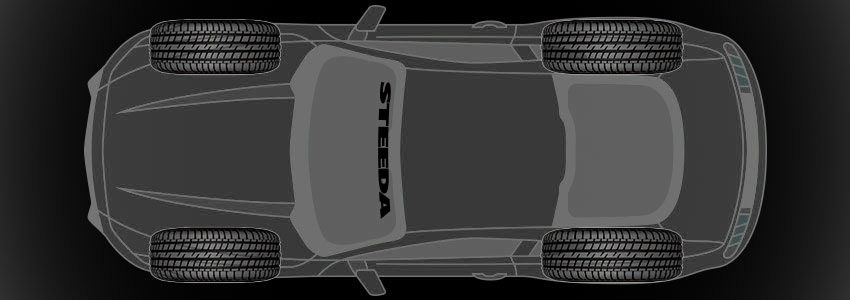
Unlike staggered setups, square setups maintain uniform tire sizes across all wheels, prioritizing simplicity, balanced handling, and predictable steering response.
They’re common in front-wheel-drive (FWD) and all-wheel-drive (AWD) vehicles, ensuring consistent performance and ease of maintenance.
Advantages include less understeer and viable tire rotations, although you may have to spend more to match your front tires with the rear.
Concluding Thoughts
All things considered, staggered wheels offer enhanced traction and aesthetic appeal, particularly in performance-focused cars. But, their impact on handling dynamics and compatibility with drivetrain layouts should be carefully considered.
Balancing these factors ensures optimal performance and safety when choosing between staggered and square wheel setups. Would you ever run staggered on your AWD? Let us know by leaving a comment below!







